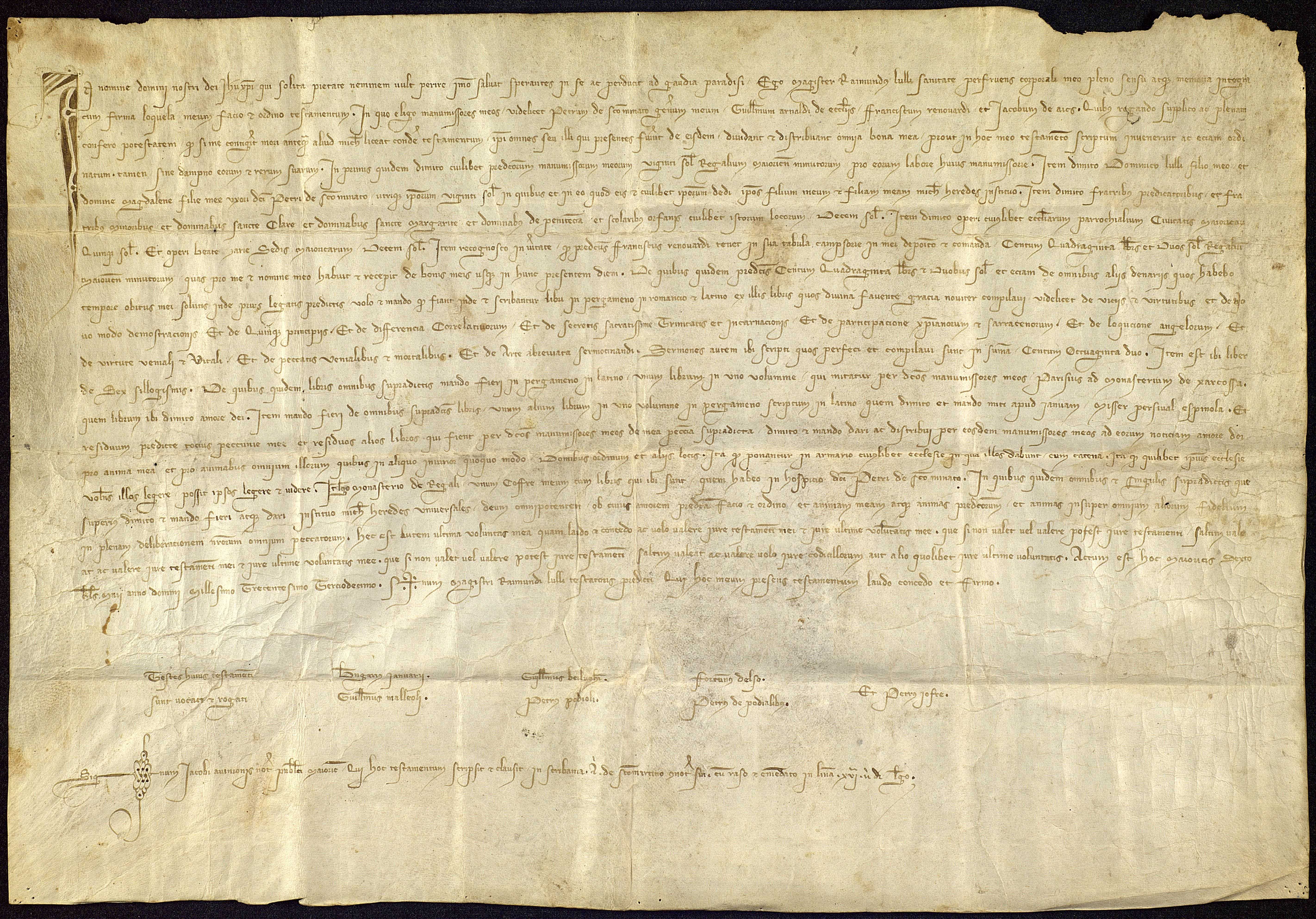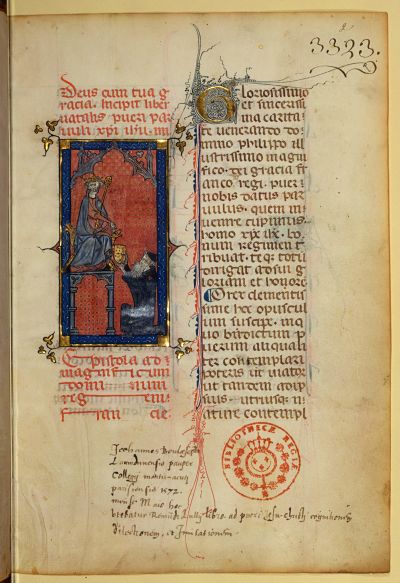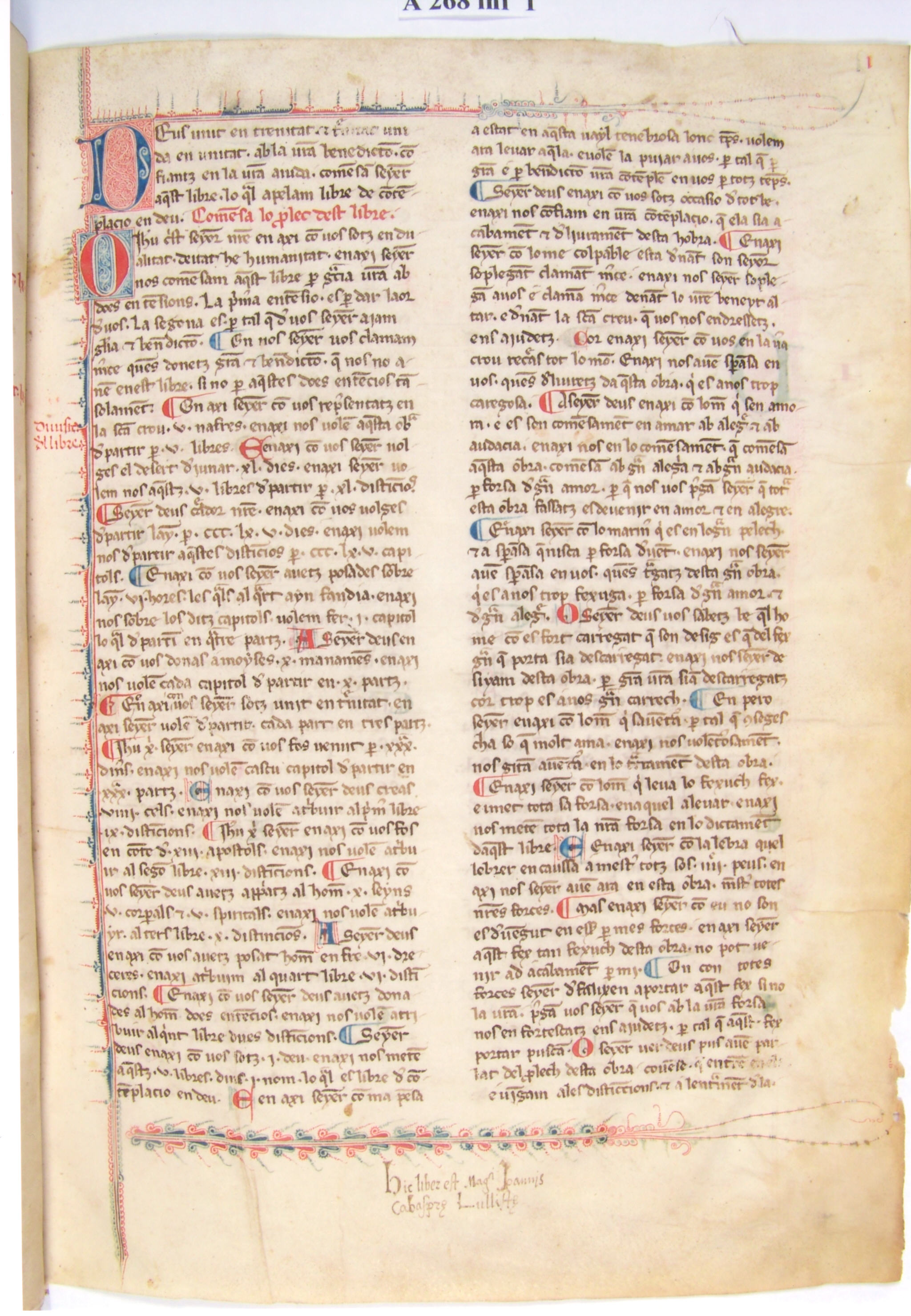- Introduction
- Context
- Life
- Thought
-
Works
- The multilingual nature of Llull's works
- Llull and the catalan language
- Diffusion and preservation
- Book of Contemplation
- Book of the Gentile
- Book of the Order of Chivalry
- Doctrina pueril
- Romance of Evast and Blaquerna
- Book of the Lover and the Beloved
- Ars demonstrativa
- Felix or the Book of Wonders
- Book of the Beasts
- Desconhort
- Tree of Science
- Exemplary Tree
- Cant de Ramon
- Rhetorica nova
- Logica nova
- Liber de fine
- Ars brevis
- Phantasticus
- Ars brevis praedicationis
- Gallery of images
- Database / Dictionary
Diffusion and preservation
Ramon Llull left innumerable historical testimonies to his constant preoccupation with the diffusion and the preservation of his works, so much so that his attitude on this subject should be seen in terms of his pecular position in the cultural context of his time. Other authors, who enjoyed more or less established and stable channels for the diffusion of their works, such as a royal court, a university or a mendicant order, were not so explicitly preoccupied with the survival of their texts, and above all they did not develop such personal means for achieving this objective.
The first peculiarity of Llull’s systematic plan for the diffusion of his works is his repeatedly expressed desire to produce versions of works in other languages: he only makes explicit reference to Catalan, Latin or Arab translations, but we know that he also arranged for translations into Occitan and French.

The second is the constitution of deposits of books on an international basis that would act both as centers of conservation and foci of diffusion. The anonymous author of the Vita coetanea (Paris, 1311) ends the work saying ‘his books are spread throughout the world, but he had them reunited especially in three places’. The existence of these three collections of books is confirmed by the testament which Llull drew up in Majorca on April 26th, 1313. They are the collection of the Chartreuse of Vauvert, of which a detailed inventory has been preserved, that in the house of the Genovese nobleman Perceval Spinola, and that in the house of Llull’s son-in-law, Pere de Sentmenat.

Llull also used the most common medieval strategy for the diffusion and conservation of works, which was to dedicate them to some important personage, as well as giving that person a manuscript worthy of being appreciated and preserved. These are tactics which Llull put into practice on various occasions; he dedicated works to kings such as Philip IV le Bel of France, James II of Aragon, Frederick III of Sicily, and Sancho of Mallorca, as well as to popes such as Nicolas IV, Celestine V, Boniface VIII, and Clement V. Still extant are manuscripts which he presented to the Doge of Venice Pietro Gradenigo, to the library of the Sorbonne, to the Chartreuse of Vauvert, to the Genovese nobleman Perceval Spinola, and probably another addressed to king Philip IV.

What has remained nowadays of the original manuscript tradition of Llull’s opus is only a small part of that which once existed. Some thirty codices have been preserved which can be related directly or indirectly to Llull himself; if to this we add other contemporary codices possibly related to Llull, the figure reaches some fifty. The fact is that Llull established his own special and varied modes of manuscript production, permitting him to promote his works both intensively and extensively.
The study of the physical aspects of these early manuscrits reveals the use of certain specific options of format and disposition of the page which are repeated with regularity; they all belong to a type of codex related to books used for university studies. This option for a certain model of book is the final stage in the process of composition of a work and the first of Llull’s strategies for its diffusion.